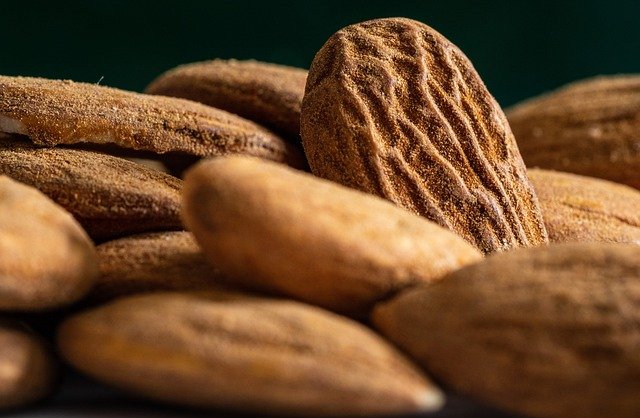
And almond milk is the number one preferred alternative to dairy milks today. It’s a title that soy milk used to have bragging rights to. The reasons I recommended almond milk throughout this history of the show are that it’s low in calories, packed with vitamins and minerals, and can help avoid dairy intolerance. But just like quinoa and kale, once something becomes trendy and known for its health benefits, we are inundated with information. You know what? It becomes overwhelming when recent headlines hit, saying almond milk contains a potentially harmful additive. I got concerned. To help clear up the confusion, I’m bringing my cameras inside our show’s morning meeting. That’s the first step to figuring out what we can do to get you the right information.
Okay, so something that caught my attention this morning was that there’s a little concern about a couple of additives in almond milk. Did anyone see that? It’s called carrageenan, actually. From a medical standpoint, there are some studies that say it’s okay, and some say it’s not, but I’m still looking into it. Okay, does anyone have any other stories about almond milk before we move on?
Yeah, there are a couple of lawsuits pending right now that claim some major milk companies are engaging in false advertising. I’ve also heard critics say it doesn’t even contain almonds.
“Well, if it doesn’t contain almonds, then what’s in it?”
“I have no idea. I’m curious how many people haven’t tried it because I haven’t either.”
“I’ve never tried it.”
“It’s delicious.”
I just saw this stat: According to Google, the question “how to make almond milk” has increased 20% over the last 3 years. It’s kind of nuts. Let’s start by addressing the additive in almond milk. It’s something called carrageenan. Everyone say with me: “carrageenan.” One more time: “carrageenan.” You can show off to your friends at cocktail parties now.
So, what is this “carrageenan”? It’s added to almond milk and other products to keep the ingredients from separating out, and we found this additive in 22 of the 27 almond milk brands at the grocery stores we searched. Most of them have this carrageenan. Tina is joining me, and she’s a self-proclaimed almond milk advocate. How are you?
So, why did you make the switch from almond milk from whatever you were drinking before?
“Well, I thought it would be healthier and fewer calories.”
“So, are you aware of this additive, carrageenan?”
“No, and I feel like I probably should be.”
“You know what people have been writing about, and you should know about it. But today, I want to be your field guide to try to navigate this area because it’s a little complicated.”
So, let’s talk about what carrageenan is. First of all, carrageenan. Studies have been done on this, and so, you know, it’s a bit of a mishmash of people who think it’s really great and are concerned. But at its essence, most studies say it’s totally fine. It’s coming from a red seaweed. Looks like this, actually. Let me show a picture to everybody, right? So, pretty natural source. The negative studies have only been done in animals or in people who have done a ton of drinking of almond milk, more than most people would consume. And they say maybe it’s harmful to the digestive system. So, it’s sort of soft stuff. But again, only with large doses. So, I think bottom line, in the amount that you’d be drinking in a smoothie or a cup of coffee, I’m not worried about the carrageenan at all. It may not be a problem even in higher doses than that. Great. So, that’s good news. Keep drinking it. Keep your box. It’s yours. Great. Thank you very much. Appreciate it.

Alright, next. And this surprised me: What percentage of almond milk is almonds, do you think? 50? 30? 20?
“Who said 20?”
“20.”
“You think that’s why? Do you think 20% sounds reasonable?”
“Yeah, I think so.”
“Well, actually, I heard you say 15, so I’m just going to do five above you. Oh, so small. Actually, the 15 was for something else. It has 2% almonds.”
“Does that surprise you?”
“Yeah, just a little bit.” “Well, don’t give up on almond milk yet. I’m just giving you the facts. It’s got 2% almonds. There’s some advantages to that. If you have a cup of almond milk, right, it has roughly, you know, 100, rather, 30 calories. If you had a cup of almonds, it’s 529 calories. So, I’ll put up there so you can all see these numbers. But there’s a big difference in calorie intake if it were mostly almonds. And if it tastes good enough and you only need 2% almonds, is there a problem with that, right? Mixing almonds with water is not the worst thing in the world. Tastes good, frankly. If it was 25% or 50% or 80% almonds, it’d probably be too thick, like sludge, to drink. So, I actually sort of like the fact that it might be okay with just 2% almonds. So, I actually think this almond milk trend is fine, despite what we’re reading in the press.”